How to Lose 10 Pounds Without Eating Vegetables
How to Lose 10 Pounds Without Eating Vegetables
It might seem hard to lose 10 pounds without veggies, but it’s doable. This guide will show you how to do it without veggies. You’ll learn about the science of losing weight and how to plan meals and exercises.
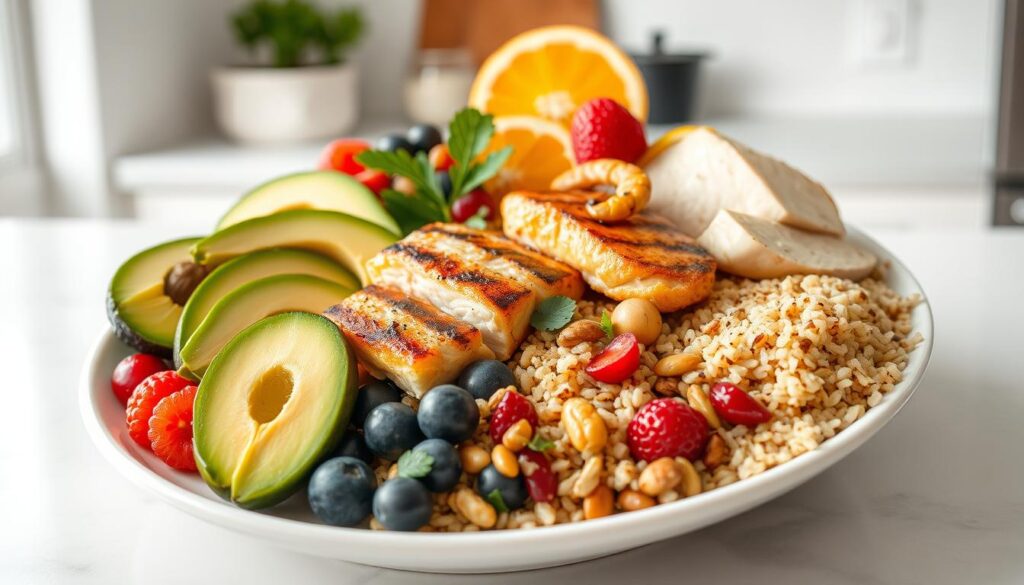
Key Takeaways
- Explore non-vegetable-based weight loss strategies that can help you shed 10 pounds.
- Learn about the science behind weight loss without relying on vegetables, including the importance of caloric deficit.
- Discover protein-rich foods that support weight loss, such as lean meats, fish, and plant-based alternatives.
- Understand the role of strategic meal planning, portion control, and timing in maximizing fat burning.
- Incorporate effective exercise routines that can accelerate your weight loss results.
Understanding Weight Loss Without Relying on Vegetables
Losing weight doesn’t mean you have to only eat vegetables. A good low-calorie diet with many non-vegetable foods can help you lose weight well and keep it off.
The Science Behind Non-Vegetable Weight Loss
Weight loss comes down to burning more calories than you eat. This makes your body use fat for energy, helping you lose weight slowly but surely. While veggies are low in calories, foods like lean proteins and complex carbs can also help you reach this goal.
Common Misconceptions About Vegetable-Free Diets
- Myth: Vegetable-free diets are unhealthy and lack essential nutrients.
- Fact: A balanced low-calorie diet can give you all the nutrients you need, even without lots of veggies.
- Myth: Vegetable-free diets are limited in food choices and variety.
- Fact: There are many non-veggie foods, like lean proteins, whole grains, and healthy fats, that can make a low-calorie diet varied and tasty.
Caloric Deficit Basics
The secret to losing weight is a consistent caloric deficit. This means burning more calories than you eat, which uses up fat and leads to weight loss. Knowing how to create a plan for this is key to losing weight with non-veggie foods.
“A low-calorie diet that focuses on non-vegetable foods can be just as good for weight loss as one that focuses on veggies, as long as you keep burning more calories than you eat.”
How to Lose 10 Pounds Without Eating Vegetables: Core Principles
Want to lose 10 pounds without veggies? Follow some key principles. Focus on portion control, balanced nutrition, and lifestyle changes. This way, you can reach your weight loss goals without needing lots of veggies.
Embrace Portion Control
Controlling your food portions is key to losing weight without veggies. Paying attention to how much you eat helps create a calorie deficit. Use measuring cups and plates to avoid eating too much, even with non-veggie foods.
Prioritize Protein-Rich Foods
Eating lean proteins is a smart weight loss strategy. Protein keeps you full and satisfied, helping you avoid overeating. Choose lean meats, fish, eggs, or plant-based options to get enough protein.
Emphasize Fiber-Filled Foods
Even without veggies, eating foods high in fiber is beneficial. Whole grains, fruits, and legumes are great for fiber. They help you feel full and support your digestive health.
Stay Hydrated
Drinking water is simple but effective for weight loss. It can help reduce hunger, boost metabolism, and stop cravings for unhealthy snacks or drinks.
Embrace Lifestyle Modifications
For lasting weight loss, it’s not just about food. Regular exercise, enough sleep, and stress management are also crucial. These habits help you lose 10 pounds without needing veggies.
By sticking to these principles, you can create a diet that’s balanced, nutritious, and calorie-controlled. This approach supports your weight loss goals without focusing on veggies.
Protein-Rich Foods That Support Weight Loss
Protein is key for losing weight. It helps build muscle and boosts your metabolism. This keeps you full longer. Here are some tasty, protein-rich foods that aid in weight loss without needing veggies.
Lean Meat Options
Lean meats like chicken breast, turkey breast, and pork tenderloin are great for protein. They’re low in fat and calories, perfect for losing weight. You can grill, bake, or sauté them to make meals exciting and filling.
Fish and Seafood Choices
Fish and seafood can change your weight loss game. Fatty fish like salmon, tuna, and mackerel are full of protein and omega-3s. These support heart health and metabolism. Lean options like shrimp, cod, and tilapia also help with weight loss.
Plant-Based Protein Alternatives
For those who want less animal protein, there are many plant-based options. Tofu, tempeh, lentils, beans, and quinoa are all high in protein. They can be used in many dishes.
Adding these protein-rich foods to your diet boosts your metabolism and muscle. You’ll feel fuller and closer to your weight loss goals.
“Protein is the building block of muscle, and muscle is the engine of your metabolism.”
Strategic Meal Planning for Maximum Fat Burning
To lose weight without veggies, you need a smart meal plan. Mix the right foods with fat-burning workouts. This combo boosts your fat loss and helps you reach your goals faster.
For a veggie-free weight loss plan, focus on a low-calorie diet. It’s not about cutting out food, but choosing nutrient-rich, filling foods. Lean proteins, healthy fats, and complex carbs help you lose fat without feeling hungry.
- Choose lean meats like chicken, turkey, or fish for protein.
- Add heart-healthy fats like avocado, nuts, and olive oil for nutrients.
- Go for complex carbs from whole grains, quinoa, or sweet potatoes for energy and fiber.
Pair your fat burning exercises with these healthy, low-calorie meals. This combo is a powerful weight loss tool. By planning your meals wisely, you fuel your body for the best workout results.
| Meal Component | Example | Nutritional Benefits |
|---|---|---|
| Lean Protein | Grilled Chicken Breast | Supports muscle growth and maintenance, boosts metabolism |
| Healthy Fats | Avocado | Provides essential nutrients, promotes satiety and fat loss |
| Complex Carbohydrates | Sweet Potato | Delivers sustained energy, fiber, and vitamins |
By following these meal planning tips, you can make a balanced, low-calorie diet. It supports your fat burning exercises and helps you lose weight without veggies.
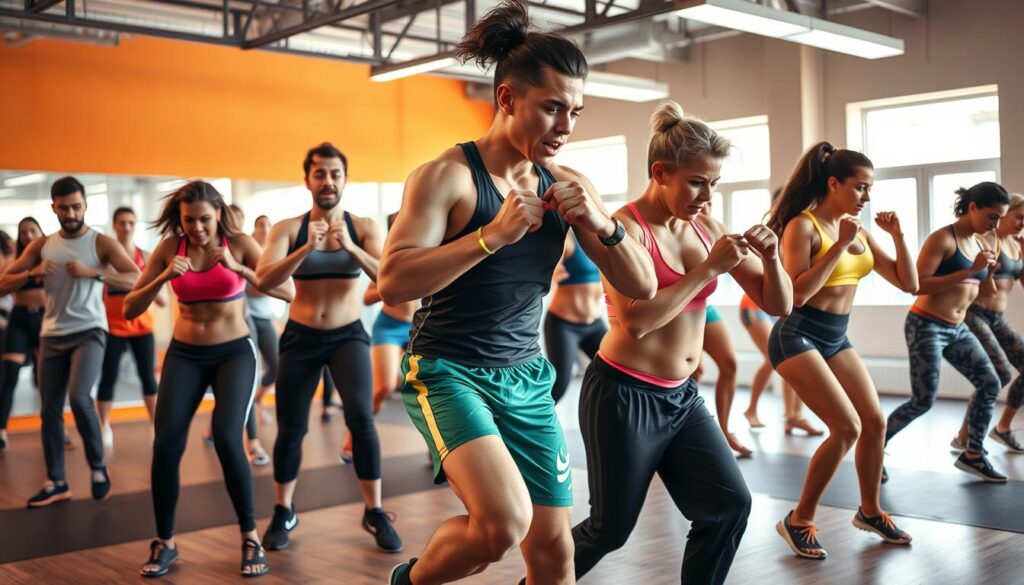
Essential Low-Calorie Foods Beyond Vegetables
Vegetables are key to a healthy diet, but there are other foods that help with weight loss too. Fruits, whole grains, and healthy fats are great alternatives. They can be easily added to your diet to support weight loss.
Fruits for Weight Loss
Fruits are a great choice for those trying to lose weight. They are full of fiber, vitamins, and natural sugars. Berries, citrus, and stone fruits are perfect for satisfying your sweet cravings.
Choose low-calorie fruits like grapefruit, apples, and pears. They help keep your calorie intake low.
Whole Grain Options
Whole grains are a big help in losing weight without vegetables. Foods like quinoa, brown rice, and whole wheat bread are filling. They are also packed with complex carbs, fiber, and vitamins.
These healthy snacks give you lasting energy and reduce cravings. They are a great addition to your weight loss plan.
Healthy Fats Selection
Healthy fats are not bad for weight loss. In fact, foods like avocados, nuts, and olive oil are good for you. They make you feel full and support your health.
Focus on unsaturated fats and avoid saturated and trans fats. This way, you can enjoy these nutritious foods while losing weight.
Effective Exercise Routines to Accelerate Results
Strategic exercise routines are key to losing weight without vegetables. By mixing fat-burning and metabolism-boosting workouts, you can see better results. This approach helps you reach your weight loss goals faster.
High-intensity interval training (HIIT) is a top choice for burning fat. It involves short, intense exercises followed by rest. This keeps your heart rate up and burns more calories. You can do HIIT with sprints, burpees, or cycling intervals.
- Incorporate HIIT workouts 2-3 times per week for maximum fat-burning benefits.
- Aim for 20-30 minutes of intense activity followed by brief recovery periods.
- Challenge yourself to push your limits during the high-intensity intervals.
Strength training is also crucial for weight loss. It builds lean muscle and boosts your metabolism. This means you burn more fat all day long.
- Focus on compound exercises that engage multiple muscle groups, such as squats, deadlifts, and push-ups.
- Aim for 2-3 strength training sessions per week, allowing for adequate rest and recovery.
- Gradually increase the weight or resistance to challenge your muscles and drive continuous progress.
A mix of cardio and strength training is best for lasting weight loss. This approach helps you achieve your goals without needing vegetables.
“The key to unlocking your weight loss potential without vegetables lies in strategic, high-intensity exercise that boosts your metabolism and burns fat.”
Portion Control and Timing Strategies
Weight loss isn’t just about what you eat. It’s also about how much and when. Using portion control and meal timing can change your weight loss game.
Meal Scheduling Tips
Having a regular meal schedule is crucial. Try to eat 3-4 balanced meals a day, spaced 4-5 hours apart. This keeps your metabolism steady and stops you from eating too much.
Also, think about trying intermittent fasting. This means eating only during an 8-10 hour window. It helps your body burn fat more efficiently.
Portion Size Guidelines
- Protein: 4-6 ounces per meal
- Complex carbs: 1/2 to 1 cup per meal
- Healthy fats: 1-2 tbsp per meal
- Fruits and berries: 1 cup per serving
Use portion-controlled plates and utensils to help you gauge your food. This way, you can feel full without eating too much.
Mindful Eating Practices
Eat slowly and savor each bite. This helps you stay mindful of your food. Try not to eat while watching TV or on your phone. It can make you eat more than you need to.
Listen to your body’s hunger and fullness signals. Stop eating when you’re just satisfied, not stuffed.
Mastering portion control, meal timing, and mindful eating can help you lose 10 pounds. These portion control and weight loss tips will help you reach your goals in a healthy, lasting way.
Healthy Snacking Without Vegetables
Following a low-calorie diet can make you feel like you’re stuck eating the same veggies all the time. But don’t worry! There are many tasty and healthy snacks that don’t need veggies.
Fresh fruit is a great low-calorie snack. Berries, apples, and fruits like pineapple and mango are sweet and refreshing. They’re full of vitamins, minerals, and fiber. Add some Greek yogurt or nuts for a snack that’s both filling and energizing.
- Sliced apple with almond butter
- Strawberries and cottage cheese
- Grapefruit and honey
If you’re craving something savory, try roasted chickpeas or edamame. They’re full of fiber and nutrients. You can also use whole-grain crackers, rice cakes, or low-fat cheese for tasty low-calorie snacks.
“Snacking on healthy options throughout the day can help you stay on track with your weight loss goals without feeling deprived.”
The secret to good healthy snacking is choosing foods that are full of nutrients. By adding different low-calorie snacks to your diet, you can enjoy tasty bites while losing weight.
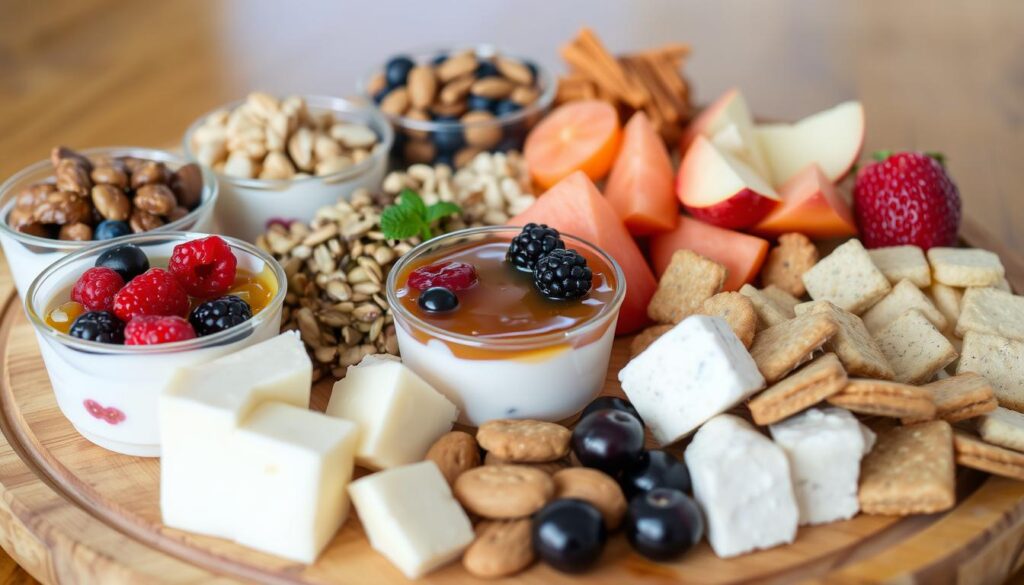
Smart Meal Replacements and Supplements
Starting a weight loss journey without veggies can be easier with meal replacements and supplements. These options help boost your metabolism and control calories. They also ensure you get the nutrients your body needs.
Protein Shake Options
Protein shakes are great for weight loss. They help you feel full, increase metabolism, and offer a quick meal or snack. Choose shakes with high-quality proteins like whey, casein, or plant-based options. Try different flavors to find what you like best.
Natural Supplements for Weight Loss
Natural supplements can also aid in weight loss. Green tea extract, probiotics, and thermogenic supplements like caffeine or capsaicin are effective. Always talk to a doctor before starting any new supplements to make sure they’re safe and work well for you.
Meal Replacement Guidelines
Using meal replacements and supplements wisely is key. They should be part of a balanced diet, not the only thing you eat. Choose options low in sugar and high in fiber, protein, and vitamins. Pay attention to how much you’re eating to avoid overdoing it.
| Meal Replacement Options | Nutritional Benefits | Potential Drawbacks |
|---|---|---|
| Protein Shakes | – High in protein to support muscle mass – Can help curb hunger and cravings – Convenient and portable | – May be high in artificial sweeteners or additives – Requires careful portion control |
| Meal Bars | – Provide a balanced macro-nutrient profile – Convenient for on-the-go meals – Often fortified with vitamins and minerals | – May be high in added sugars or unhealthy fats – Texture and taste can vary greatly |
| Powdered Meal Replacements | – Customizable nutrient composition – Easy to mix and consume – Can help control calorie intake | – May lack the satisfaction of a whole-food meal – Requires careful preparation and monitoring |
Adding smart meal replacements and supplements to your diet can help you lose weight without veggies. They boost metabolism and support health. Always focus on a balanced diet and get advice from a healthcare professional.
Conclusion
In this guide, we’ve looked at ways to lose 10 pounds without eating vegetables. We’ve talked about eating more protein, planning meals, and exercising well. These steps help you reach your weight loss goals without giving up on food you like.
The secret to success is knowing how to lose weight without vegetables. It’s about creating a calorie deficit and eating foods that are good for you. By doing this, you can lose weight, feel better, and be more confident.
For lasting success, balance is key. Eat a variety of foods like fruits, whole grains, and healthy fats. This ensures you get all the nutrients you need. By using the tips in this guide, you can how to lose 10 pounds without eating vegetables and start your journey to a healthier you.
FAQ
What are some effective strategies for losing 10 pounds without eating vegetables?
To lose 10 pounds without veggies, start by eating smaller portions. Choose protein-rich foods that aren’t vegetables. Also, do exercises that burn fat and eat mindfully.
Can I lose weight without relying on vegetables?
Yes, you can lose weight without veggies. Eat a balanced diet with protein, healthy fats, and carbs. This way, you can reach your weight loss goals.
What are some non-vegetable foods that can support weight loss?
Foods like lean meats, fish, and whole grains can help you lose weight. Also, fruits and healthy fats are good choices. They make you feel full and help burn fat.
How can I create a meal plan for weight loss without vegetables?
For a veggie-free meal plan, focus on portion control and smart food combinations. Choose protein-rich and low-calorie foods. This keeps your calorie intake low while ensuring you get enough nutrients.
What types of exercises can I do to lose weight without relying on vegetables?
Good exercises for weight loss include cardio like walking, jogging, and cycling. Also, do strength training to build muscle and boost your metabolism.
Are there any healthy snack options that don’t involve vegetables?
Yes, there are many healthy snack options without veggies. Try fresh fruits, Greek yogurt, nuts, and high-protein foods like lean meats or eggs.
Can supplements and meal replacements help with weight loss without vegetables?
Yes, supplements like protein powders and meal replacement shakes can aid in weight loss. Use them in a balanced, veggie-free diet and with regular exercise.
How important is portion control for losing 10 pounds without eating vegetables?
Portion control is key for losing 10 pounds without veggies. Watch your serving sizes and eat mindfully. This helps you stay in a calorie deficit and reach your weight loss goals.
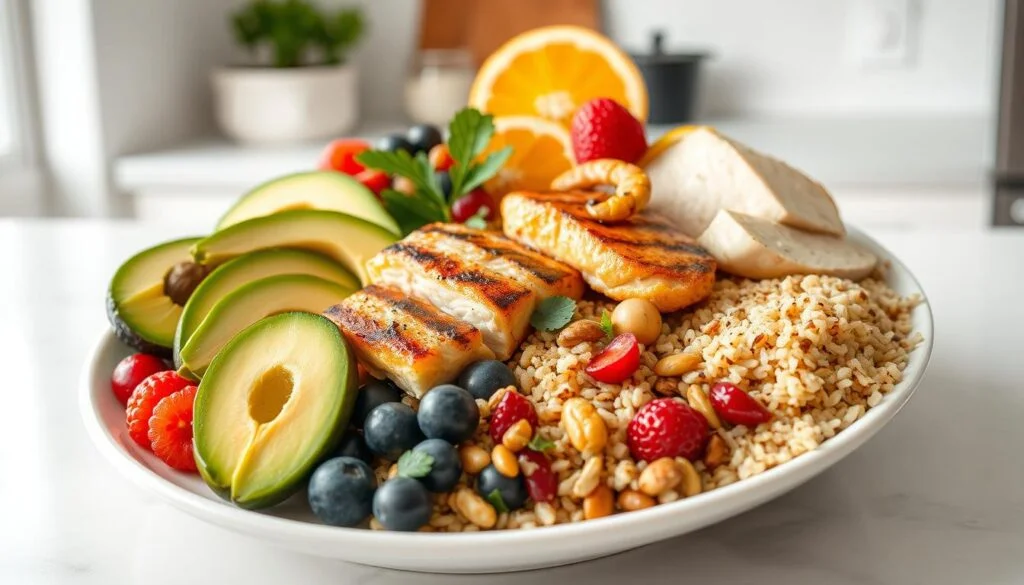
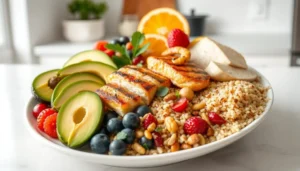


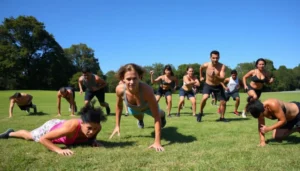

Post Comment